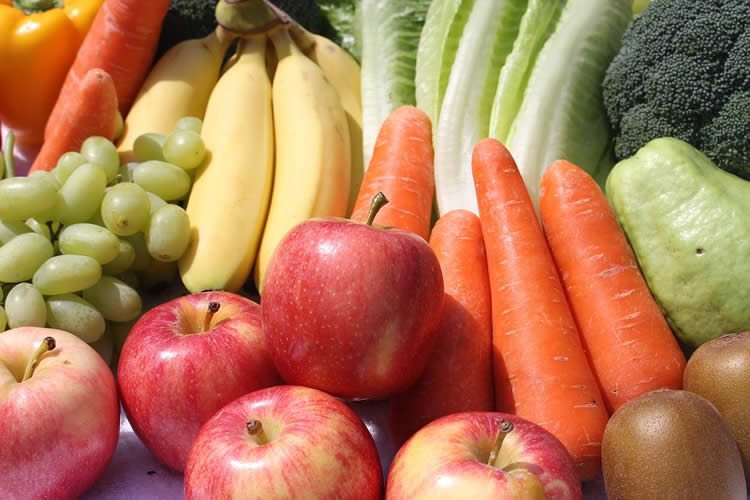Summary: Researchers report eating the right amount of dietary fibers from cereals, breads and fruits can help us to avoid disease and disabilities associated with aging.
Source: Westmead Institute for Medical Research.
Most people know that a diet high in fibre helps to keep us ‘regular’. Now Australian researchers have uncovered a surprising benefit of this often-undervalued dietary component.
A recent paper published in The Journals of Gerontology: Medical Sciences by scientists from The Westmead Institute for Medical Research found that eating the right amount of fibre from breads, cereals and fruits can help us avoid disease and disability into our old age.
Using data compiled from the Blue Mountains Eye Study, a benchmark population-based study which examined a cohort of more than 1 600 adults aged 50 years and older for long-term sensory loss risk factors and systemic diseases, the researchers explored the relationship between carbohydrate nutrition and healthy ageing.
Surprisingly, they found that, out of all the factors they examined – which included a person’s total carbohydrate intake, total fibre intake, glycemic index, glycemic load, and sugar intake – it was the fibre that made the biggest difference to what the researchers termed ‘successful ageing’.
Successful ageing was defined as including an absence of disability, depressive symptoms, cognitive impairment, respiratory symptoms, and chronic diseases including cancer, coronary artery disease, and stroke.
According to lead author of the paper, Associate Professor Bamini Gopinath from the Institute’s Centre for Vision Research, the study is the first to look at the relationship between carbohydrate intake and healthy ageing, and the results were significant enough to warrant further investigation.
“Out of all the variables that we looked at, fibre intake– which is a type of carbohydrate that the body can’t digest – had the strongest influence.
“Essentially, we found that those who had the highest intake of fibre or total fibre actually had an almost 80 percent greater likelihood of living a long and healthy life over a 10-year follow-up. That is, they were less likely to suffer from hypertension, diabetes, dementia, depression and functional disability.”
While it might have been expected that the level of sugar intake make the biggest difference to successful ageing, Associate Professor Gopinath points out that the particular group they examined were older adults whose intake of carbonated and sugary drinks was quite low.

Although it is too early to use the study results as a basis for dietary advice, Associate Professor Gopinath said the research has opened up a new avenue for exploration.
“There are a lot of other large cohort studies that could pursue this further and see if they can find similar associations. And it would also be interesting to tease out the mechanisms that are actually linking these variables.”
This study backs up similar recent findings by the researchers, which highlight the importance of the overall diet and healthy ageing.
In a study published last year, also in The Journals of Gerontology: Medical Sciences, The Westmead Institute researchers found that, in general, adults who closely adhered to recommended national dietary guidelines reached old age with an absence of chronic diseases and disability, and had good functional and mental health status.
Source: Westmead Institute for Medical Research
Image Source: This NeuroscienceNews.com image is in the public domain.
Original Research: Abstract for “Association Between Carbohydrate Nutrition and Successful Aging Over 10 Years” by Bamini Gopinath, Victoria M. Flood, Annette Kifley, Jimmy C. Y. Louie, and Paul Mitchell in The Journals of Gerontology: Medical Sciences. Published online June 1 2016 doi:10.1093/gerona/glw091
[cbtabs][cbtab title=”MLA”]Westmead Institute for Medical Research. “Dietary Fiber May Be Key To Healthy Aging.” NeuroscienceNews. NeuroscienceNews, 4 June 2016.
<https://neurosciencenews.com/fiber-aging-neuroscience-4376/>.[/cbtab][cbtab title=”APA”]Westmead Institute for Medical Research. (2016, June 4). Dietary Fiber May Be Key To Healthy Aging. NeuroscienceNews. Retrieved June 4, 2016 from https://neurosciencenews.com/fiber-aging-neuroscience-4376/[/cbtab][cbtab title=”Chicago”]Westmead Institute for Medical Research. “Dietary Fiber May Be Key To Healthy Aging.” https://neurosciencenews.com/fiber-aging-neuroscience-4376/ (accessed June 4, 2016).[/cbtab][/cbtabs]
Abstract
Association Between Carbohydrate Nutrition and Successful Aging Over 10 Years
Background: We prospectively examined the relationship between dietary glycemic index (GI) and glycemic load (GL), carbohydrate, sugars, and fiber intake (including fruits, vegetable of breads/cereals fiber) with successful aging (determined through a multidomain approach).
Methods: A total of 1,609 adults aged 49 years and older who were free of cancer, coronary artery disease, and stroke at baseline were followed for 10 years. Dietary data were collected using a semiquantitative Food Frequency Questionnaire. Successful aging status was determined through interviewer-administered questionnaire at each visit and was defined as the absence of disability, depressive symptoms, cognitive impairment, respiratory symptoms, and chronic diseases (eg, cancer and coronary artery disease).
Results: In all, 249 (15.5%) participants had aged successfully 10 years later. Dietary GI, GL, and carbohydrate intake were not significantly associated with successful aging. However, participants in the highest versus lowest (reference group) quartile of total fiber intake had greater odds of aging successfully than suboptimal aging, multivariable-adjusted odds ratio (OR), 1.79 (95% confidence interval [CI] 1.13–2.84). Those who remained consistently below the median in consumption of fiber from breads/cereal and fruit compared with the rest of cohort were less likely to age successfully, OR 0.53 (95% CI 0.34–0.84) and OR 0.64 (95% CI 0.44–0.95), respectively.
Conclusions: Consumption of dietary fiber from breads/cereals and fruits independently influenced the likelihood of aging successfully over 10 years. These findings suggest that increasing intake of fiber-rich foods could be a successful strategy in reaching old age disease free and fully functional.
“Association Between Carbohydrate Nutrition and Successful Aging Over 10 Years” by Bamini Gopinath, Victoria M. Flood, Annette Kifley, Jimmy C. Y. Louie, and Paul Mitchell in The Journals of Gerontology: Medical Sciences. Published online June 1 2016 doi:10.1093/gerona/glw091







